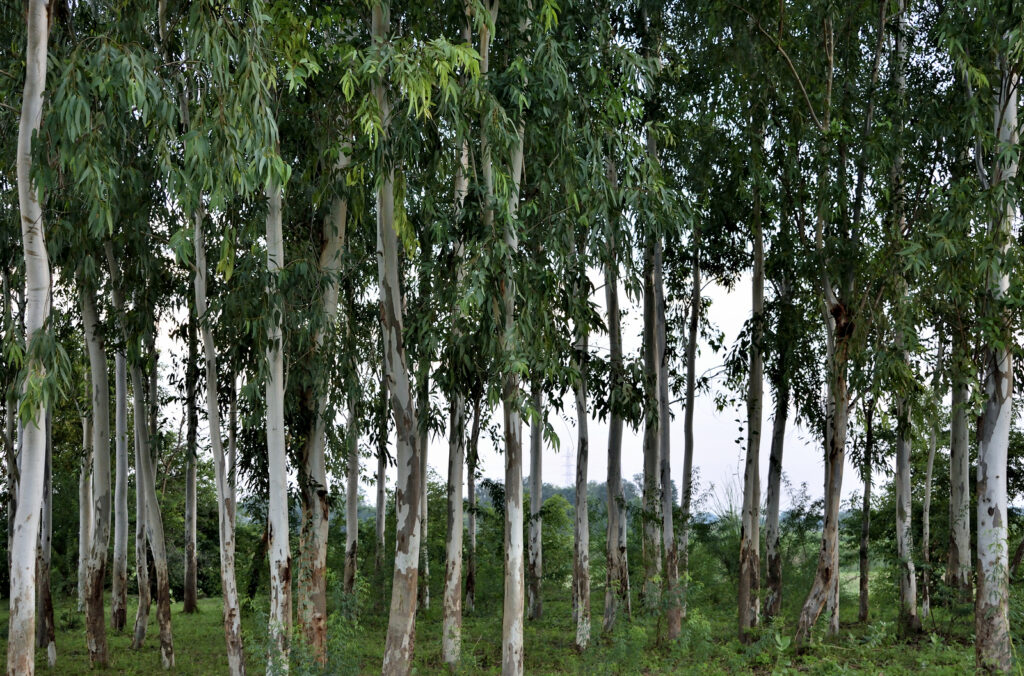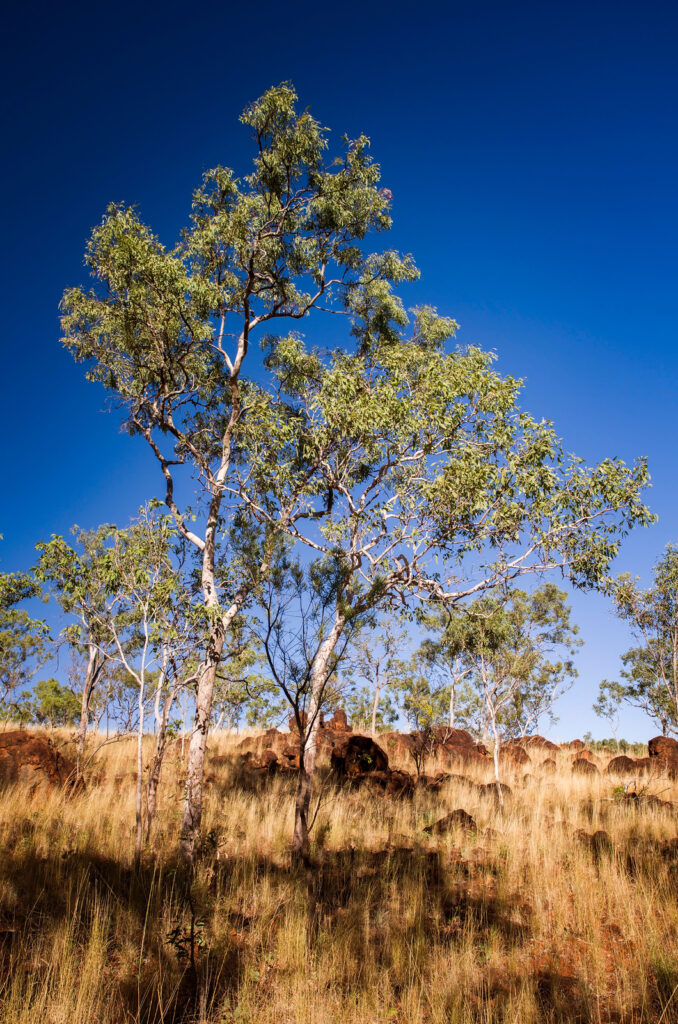Eucalyptus is a genus or rapidly growing broad-leaved evergreen trees native to subtropical and warm-temperate climates. Many eucalyptus are known as Gum Trees.
Eucalyptus are members of the Myrtle Family. They grow to great size and are of ornamental value for street and lawn.
Eucalyptus has attractive gray-green or bluish, lance-shaped, or ovate leaves on pendulous twigs. Some eucalyptus are profuse bloomers bearing umbels of white or pink flowers.
There are dwarf types of eucalyptus; some juveniles are grown as indoor and greenhouse foliage plants. Some endure extremes of heat as well as cold.
Eucalyptus are propagated by seed sown under screens.

Get to know Blue Gum Eucalyptus
- Plant type: Evergreen tree
- Growing Zones and range: 8-10
- Hardiness: Evergreen to warm temperature regions
- Height and spread: To 150 feet (45m) tall and 40 feet (12m) wide
- Foliage: Oval, silvery blue when young; glossy green, long and narrow when mature
- Flowers: Petalless flowers usually white or creamy yellow, sometimes red stamens are usually borne in umbels
- Bloom time: Winter to spring
- Uses: Shade tree, windbreak, specimen tree
- Botanical name: Eucalyptus globulus
- Common name: Blue gum, eucalyptus, ironbark
- Origin: Australia
Where to plant Blue Gum
- Grow blue gum in full sun.
- Blue gum will adapt to a wide range of soils; neutral to slightly acidic soil is best.
When to plant Blue Gum
- Transplant smallest container grown trees in winter or spring.

Planting and spacing Blue Gum
- Space eucalyptus 40 to 60 feet apart; plants grow as much as 10 feet annually
How to water and feed Blue Gum
- Water blue gum can tolerate drought. Overwatering can cause chlorosis.
- Fertilize with an all-purpose fertilizer occasionally
- Iron may be required for leaves that turn yellow between the veins (chlorosis).
Blue Gum care
- Selective pruning may improve the shape of the tree; trees can be cut back to make them bushier and stouter; new growth usually breaks out below pruning cuts.
Blue Gum common problems
- Blue gum has no serious pests or diseases.
- Blue gum can be injured by strong winds.
Blue Gum propagation
- Sow blue gum seeds in spring or summer.
Eucalyptus varieties to grow
- Red-flowering gum, Eucalyptus ficifolia, red-tinged broadly lance-shaped leaves; dense rounded form; grow quickly to 40 feet (12m); pink or red flowers in summer.
- White ironbark, Eucalyptus leucoxylun, pendulous branches, grayish narrow leaves, bears white, pink, or red flowers from winter to spring; grow to 50 feet (15m) tall.















